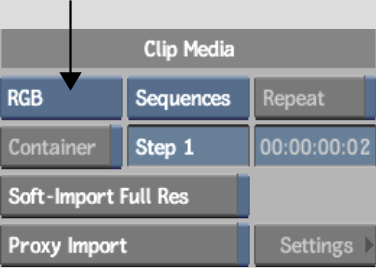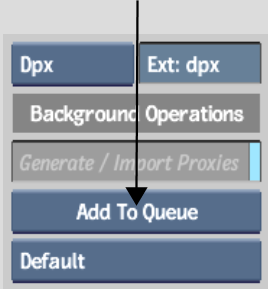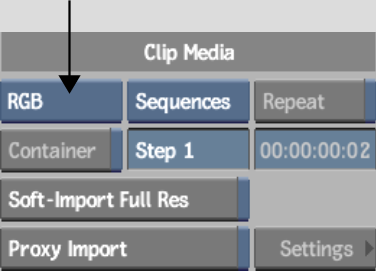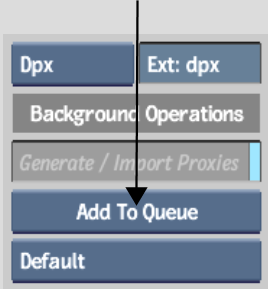Show in Contents

Add to Favorites

Home: Flint

Importing OpenEXR Files

Importing Media Files

Importing Adobe Photoshop Files

Importing RGBA Files
When you import an RGBA file into Flint,
you can import the RGB image and the alpha channel as separate clips.
The alpha channel can be imported as is or inverted. You can also
import the RGB image and alpha channel and place them in a matte
container.
To import or soft-import an RGBA file:
- From the Library menu,
click Import Image and select a destination reel.
- In the Import Image menu, browse to the
directory containing the media with the alpha channel and select
the files.
- From the Channels box, select one of
the following:
- RGBA to import the image and the alpha
as is, as separate clips.
- RGBA Inverted to import the image and
the alpha inverted, as separate clips.
- Enable Soft-Import Full Res if you want
to import a reference to the media, but you do not want to store
the media on the local storage.
- Optional: Select a queueing option from
the Add To Queue box.
If you are soft-importing
the clips, you can generate proxies in the background. This gives
you the ability to assemble the timeline while proxy generation
is taking place. See
Importing and Soft-Importing in the Background.
- Click Load.
The RGB image and the alpha channel are loaded
separately to the Desktop.
To import or soft-import an RGBA file
into a matte container:
- From the Library menu,
click Import Image and select a destination reel.
- Browse to the directory containing the
media with the alpha channel and select the files.
- From the Channels box, select RGBA or
RGBA Inverted.
- Enable Container to create a matte container.
- Enable Soft-Import Full Res if you want
to import a reference to the media, but you do not want to store
the media on the local storage.
- Optional: Select a queueing option from
the Add To Queue box.
If you are soft-importing
the clips, you can generate proxies in the background. This gives
you the ability to assemble the timeline while proxy generation
is taking place. See
Importing and Soft-Importing in the Background.
- Click Load.
The RGB image and the
alpha channel are loaded into the clip library and are merged into
a single clip inside a matte container.
- In the clip library, select the clip
and click Load.
The file is loaded to
the clip library and the words Matte Container are appended to the
end of the filename.











